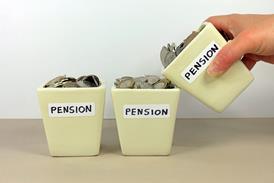Defined contribution experts have said a lack of sufficient data on members’ likely reaction to April's pension flexibilities is leaving default fund design in a state of limbo.
At that point, members will have greater freedom to either take their pot as cash, annuitise, draw down their income – or a combination of those.
Esther Hawley, associate at consultancy Barnett Waddingham, said defined contribution schemes are being forced to provide a default in the absence of this key piece of information.
“How a member intends to draw their benefits is key to a successful investment strategy,” she said. “Ignoring this is no better than shutting your eyes and hoping.”
Hawley added that the best hope in the current circumstances would be for a strategy “that will work 80 per cent of the time for 80 per cent of the membership”.
Alan Morahan, head of DC consulting at Punter Southall, said the “least worst” approach in the interim would be one in which a highly diversified fund derisks to preserve capital as the member approaches their retirement.
The difficulty with this approach is we know people find it difficult to make these decisions and many will fail to do so
Alan Morahan, Punter Southall
Beyond that, he said, one solution could be to segregate the membership by pot size and design strategies that direct them towards either cash or drawdown.
He added: “However, this may be too blunt an approach, as each member may have significant funds outside of the scheme, which could affect their decisions at retirement.”
An alternative might include a fund that caters for some element of all those end-points, but that could disadvantage those planning to take their pot as cash, as part of the fund would be left exposed to equities near retirement, he said.
Three-stranded approach
Provider Fidelity last week launched a default strategy that in the three years approaching retirement enables people to choose the path they feel will best suits their needs.
The fund uses diversified growth funds to achieve a 60/40 split between risk assets and fixed income. In the run-up to retirement it aims to dampen volatility to reach an approximate split at retirement of 40 per cent in growth assets, around a third in fixed income and a third in cash.
Dan Smith, director of DC business development, said there is a group of employers and pension schemes who feel nervous about the changes, and are looking to outsource some of the responsibility associated with making a default fund fit for purpose.
“There’s an increased appetite for employers to look at providers’ defaults and move away from the governance responsibilities," he said, pointing to the advent of independent governance committees, mastertrust boards and greater oversight from financial regulators.
“There’s a lot of regulation… to make sure this thing is up to date and modern, which is increasingly of interest to plan sponsors.”
But Morahan said a default fund that splinters into separate paths in the years approaching retirement would rely on a “concerted communication campaign” to get those members to make a decision.
“The difficulty with this approach is we know people find it difficult to make these decisions and many will fail to do so,” he said. “This will then mean that one of the strategies will have to be ultimate default.”














